Region locking and competition: Challenging assumptions in Episode 6 of Esports Salon
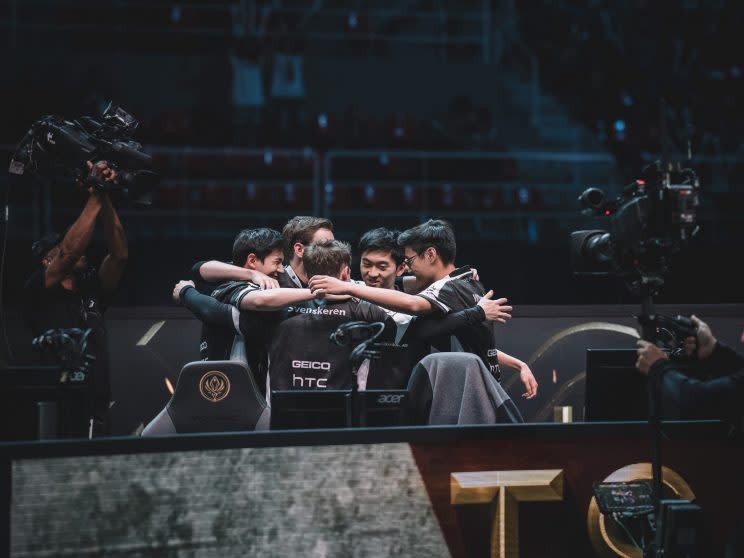
No one believes in North American esports talent, not even NA LCS team owners.
At least, that’s the impression I gleaned from Episode 6 of Esports Salon. Duncan “Thorin” Shields’ series Esports Salon has been a useful tool for raising questions relevant to the esports space and involving the relevant people. His recent episode about franchising and region locking focused mostly on region locking. The episode featured guests who own or have owned North American LCS teams debating whether region-locking in League of Legends should be considered obsolete. Two guests, former Renegades co-owner Christopher “MonteCristo” Mykles and Cloud9 CEO Jack Etienne, favored the elimination of region-locking while the third, Immortals CEO Noah Whinston, favored retaining it.
The region-locking debate is an interesting one. When region-locking — or the two foreign player rule — first came to League of Legends, I didn’t understand the point of it. I believed that the best players should go to the best organizations and/or receive the best pay depending on their priorities, regardless of residence.
However, it’s because of this very sentiment that I’ve changed my mind and now believe region-locking is necessary for the health of League of Legends globally. With poor scouting and research from the West and China, many have simply defaulted to believing Korean players will always make better LoL players, regardless of circumstance. The Esports Salon discussion did nothing to assuage these concerns.
The Salon’s basic premise was that eliminating region-locking would increase the competitiveness of NA LCS. Every member of the panel agreed, and Noah argued against region-locking purely based upon the basis of reaching a target, NA-borne audience and growing a fanbase.
As a viewer, I found myself questioning why every guest agreed that removing region-locking would, by default, make NA LCS more competitive. I can see arguments for NA LCS becoming more competitive in the short-term without region-locking, but when you consider the long-term competitiveness of North American teams internationally, several holes went unaddressed. I felt the need to challenge this assumption and several others throughout the hour-and-a-half-long conversation.
Why region-locking came to North America and Europe
From the very start of the discussion, I couldn’t agree to the basic argument regarding why region-locking exists in the first place.
“When and why [region-locking] occurred in the first place was mostly to prevent China, who had by far the most money, basically ransacking Korea at the time because Koreans were not going to NA or EU for the salaries that those two regions were capable of offering when region-locking was first implemented about three years ago,” Monte claimed.
He went on to explain that since then, NA and EU salary offerings became more internationally competitive, so region-locking is now obsolete.
On the contrary, region-locking coming to NA and EU had nothing to do with region-locking in China, as it actually existed in China before it did anywhere else. The League of Legends Association of Chinese Esports, not Riot Games, implemented region-locking in China in May of 2014, a half year before it came to North America or Europe, when the first Korean imports came to Star Horn Royal Club, Invictus Gaming, WE Academy, and Team WE.
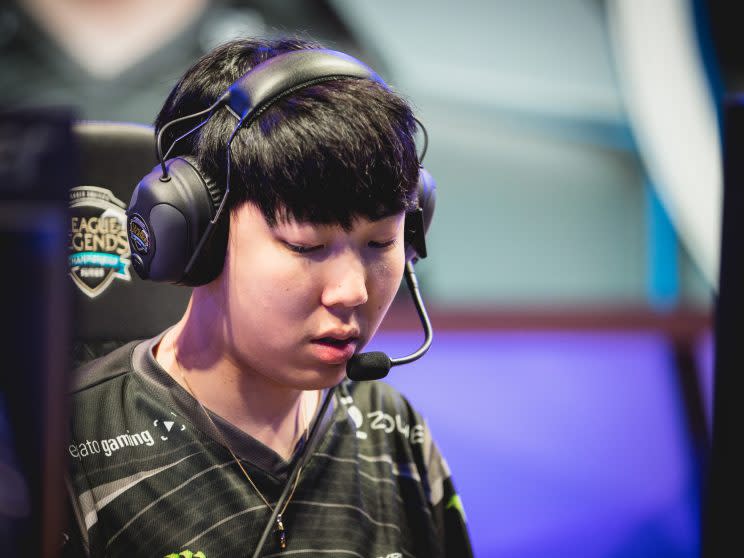
Checking the rosters at the time, it adds up. WE, WEA, iG, and SHRC didn’t just coincidentally limit their import appetite to one or two players.
Salary discrepancies between China and the west, initially, weren’t a motivating factor either. LACE claimed they desired to protect the local talent with the ruling, which also occurred before news of the first imports from top Korean teams, Lee “KaKAO” Byungkwon and Song “Rookie” Euijin, arrived during the World Championship later that year. The first Korean imports to China didn’t have outrageous salary offers compared to those available in the west. Most of the early imports had comparatively modest offers.
China’s region-locking also came after the first players traveled to a new region in other parts of the world. China’s LMQ came to qualify for the North American Challenger Series in the offseason between 2013 and 2014, largely spurred on by a lack of funds from their Chinese owner, Tian Ci. But they weren’t the first foreign team to try it. Quantic Gaming picked a full roster of South Korean players, including Choi “Locodoco” Yoonseop, to make a play for the NA LCS in 2014 Spring.
Quantic failed to even qualify for the NA LCS Promotion Tournament, but that didn’t stop speculation of other all-foreign rosters looking to join leagues abroad. Samsung Red’s rumored all-Korean lineup featured now-famous names like Heo “Huni” Seunghoon and was allegedly headed to Europe.
LMQ’s succeeded in 2014 NA LCS Summer prior to their major ownership controversy, and top teams like Team Solomid already imported more than two foreign players (Soren “Bjergsen” Bjerg, Ham “Lustboy” Jangsik, and Maurice “Amazing” Stuckenschneider were all members of TSM’s 2014 World Championship roster). That, along with rumors of other all-Korean teams aiming for LCS qualification, made it seem unlikely that China was the sole reason Riot Games decided to implement region-locking. Especially since China already had it for six months before it came to NA and EU or before outrageous offers inspired by streaming companies emerged.
But why is this significant? MonteCristo’s argument suggests that if salaries are now competitive internationally, region-locking is obsolete. But that doesn’t seem to be why it was implemented; it was implemented at least in part because talents and infrastructures that were behind could quickly get overrun. This threat still exists, even with established organizations in the LCS and franchising fast-approaching, and the mentalities of many teams and owners speaks volumes.
A short address to the NA-born fanbase argument
With that assumption out of the way, the meat of the Salon’s argument begins. The discussion splits into two facets: the idea that bringing more foreign players makes North American players more competitive and the idea that region-locking should be preserved to retain three NA players per team that can market to an NA-born fanbase.
I consider the second argument somewhat of a red herring anyway, as I don’t even think it has to enter the discussion if NA manages to compete internationally. International successes should give teams a lot of fans by default, so it comes down to what you prioritize — that will have larger implications later on in this discussion, however.
I agree with aspects of the argument that both Jack and Noah bring to the table. Noah argues that “it’s a lot easier for me to connect to the one who shares a cultural background with me,” which I prefer to think of more along the lines of Monte’s “tribal” approach. We see it in the European LCS where pro players will often get a larger audience by streaming in their native language. H2K garnered a large Polish fanbase based upon signing Marcin “Jankos” Jankowski and Oskar “VandeR” Bogdan. National Leagues build modest followings despite lower levels of competition than LCS or CS.
Jack maintains that high viewership counts on streams are “a product of the player putting time into building a fanbase.” Jung “Impact” Eonyeong, for example, will get fewer viewers than Jeon “Ray” Jiwon because Ray puts more effort into streaming and building that kind of following.
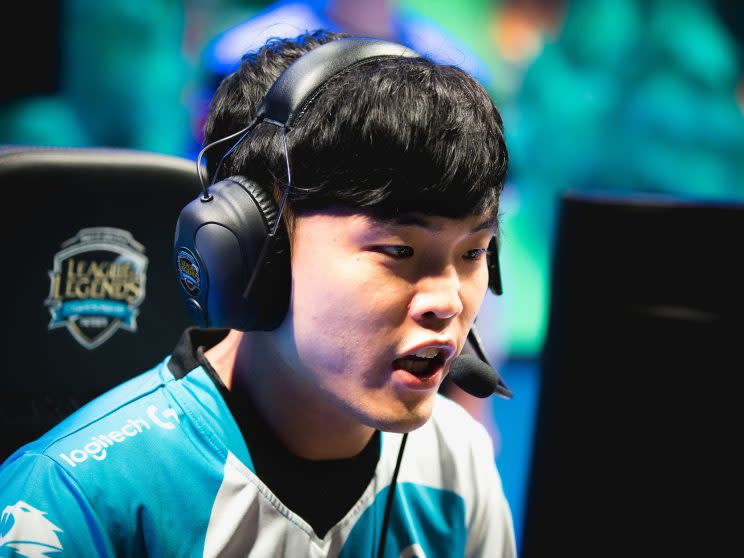
Noah’s argument that’s supposed to trump Jack’s stance comes from China.
He said, “As much as the streaming platforms have exploded [in China] in the last year or two years… Chinese streaming platforms have actually stopped acquiring content from non-Chinese sources… If it truly didn’t matter the culture or the language that a player spoke, it only mattered on performance, then that type of behavior would be irrational. Easyhoon, a great player, should have a ton of viewers, but it’s the job of these Chinese streaming platforms to cater to what the audiences want… At least in China, the Chinese audience has expressed a preference for Chinese language, Chinese culture content.”
For several reasons, this is a much more complicated issue than Noah makes it seem. Initially, when Korean imports came to China, many hardcore fans preferred watching Korean players in OGN, in part due to Chinese casting talent like Sun “XiaoXiao” Yalong. Chinese streaming platforms saw bringing Korean talents to China as an opportunity.
Streaming contracts in China, however, initially worked very differently to platforms like Twitch. At the time when many of these were made, Korean players could sign up-front contracts that guaranteed salary, but then didn’t necessarily meet streaming quotas or didn’t put effort into putting on a consistent production.
A lot of Korean players didn’t become popular simply because they didn’t stream, but players like Rookie and Kim “Doinb” Taesang picked up a following because of their skill and willingness to learn Chinese quickly. Easyhoon, Noah’s example, also falls into that category. Chinese fans appreciate his willingness to not only learn the language but read Chinese folktales and use his account names to reference Chinese stories.
In addition, operating costs for streaming platforms rose. With the Chinese government requiring more moderation of streams from December 2016, salaries and pay dropped to the point where Chinese caster and ex-pro player Xu “Joker” Fei told his stream viewers that NA and some Korean team salaries have outpaced those offered by Chinese teams.
But by Noah’s own admission, both he and Jack could argue themselves in circles as “neither of us can ever prove counterfactual.” As such, I’m less concerned with addressing this side of the debate that Esports Salon spent comparatively more time discussing.
Of course it’s solo queue
The much more interesting discussion comes up when, rather than asking how many viewers Impact might get were he born in North America, we pose the question of why there isn’t an NA-born Impact equivalent. Why is NA generally agreed upon as the major region with the shallowest pool of native-born talent?
Factors like sheer server population size and the US’ historically higher ratio of console-to-PC gaming compared to Europe and Asia certainly play a role, but poor solo queue environment has come up much more often as a topic of discussion. As far back as 2013, Counter Logic Gaming’s George “HotshotGG” Georgallidis argued that NA’s solo queue culture will always hold the region back internationally.
NA will always be the worst region, solo queue shapes players and when LCS players are trolling, nobody takes it serious it shows in results
— HotshotGG (@CLG_HotshotGG) December 10, 2013
Visiting players and imports have commonly decried the NA solo queue ladder. NA solo queue allegedly has the worst culture of all major regions. It’s full of trolls and one-tricks who want to make tryharding an insult.
The Esports Salon guests didn’t shy away from this topic. Jack’s major argument was that importing players improves the competitiveness of North American solo queue.
“Our solo queue is not as high quality as Korean solo queue,” Jack said, “if you bring that top talent out here, you’re just going to be playing against better players, which will push you to be better.”
There’s some merit to Jack’s statement. Teams and players globally have argued that Korean players being added to a team improves the environment initially, and domestic players become motivated to grind the ladder more. Yet this drive seems somewhat fleeting.
Shin “Seraph” Wooyeong, the first Korean import to North America, said in an interview with Blitz Esports, “Honestly, NA solo queue is garbage and it helps zero percent for improving my skills…my mentality with the teammates — I think that’s more good. [The] first time, I didn’t understand [why] everyone just chilled and hung out. But now — I think I agree now.”
Even in the European servers, commonly regarded as more competitive than North American servers, Huni said on a Korean talk show with NiceGameTV, “Since we can’t play KR solo queue and only play EU Solo queue, my mechanics have deteriorated.”
Initially, Korean imports are shocked by the lack of competitive drive exhibited on North American teams. Chae “Piglet” Gwangjin in particular wasn’t shy about saying, “While playing in NA, I also noticed a difference in mentality amongst players,” and added that he believed that he could never win Worlds while on a foreign team.
Piglet and Seraph both accepted the difference in environment. Seraph started to think “just chill and hang out” made more sense after experiencing solo queue. Piglet lost faith in winning an international competition. Huni argued he experienced a noticeable decrease in skill in Europe.
What amount of imports becomes necessary to completely change the solo queue environment and make it more competitive? MonteCristo threw out the number “60-70,” but as Noah pointed out, “If you bring over…20 more Korean players than currently exist, that’s half the players in LCS.”
Effectively, the problem with the “imports will improve solo queue” argument is that the majority will usually dictate the cultural environment. You either replace the majority of players in the top of the NA solo queue ladder, or the experiences of acclimating to a less competitive environment keep recurring to the point where the players you’re importing to improve the environment adapt to it rather than change it.
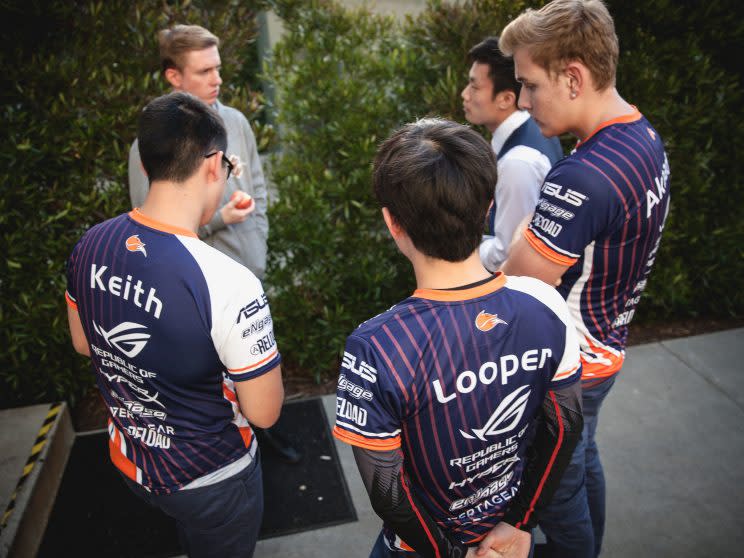
Jack compares bringing new imports to NA to bootcamping in Korea. In both scenarios, you play against the best. What teams often gain from bootcamping in Korea, however, is insight into the game, not just the ability to compete against better individual players on the ladder. North American teams learn from the ability to play against Korean teams themselves, and they notice gaps in technique such as Locodoco’s famous discussion of how mid laners prep waves for jungle ganks.
What’s the difference? The environment. If bootcamping in Korea were the same as importing Korean players to NA, then Korean solo queue would experience a decline in competitiveness because of NA players like Greyson “Goldenglue” Gilmer continuously making independent decisions to leave and bootcamp there. No one seems to complain about this phenomenon because it doesn’t happen. At most, NA players get “hardstuck in Diamond 4.”
As newly imported players become more acclimated to their NA environment, there’s less of a skill gap between them and the NA players they’re supposed to improve. Some teams may also hope to learn more about competitive LoL from their imports. Insights into the game will change with patches. To keep current in both, by this logic, each split would require a new crop of imports to combat decay.
The process of constantly refreshing players would be very inefficient. Constantly starting over in teaching the language for the purpose of ironing out communication, helping the player move and adapt, etc, becomes a high cost that probably offsets the benefits one gains from the initial burst a single player provides to the solo queue environment.
Don’t blame your players for something you encourage them to do
All signs, then, point to a problem with the system, not the players themselves. Why can’t teams work internally with existing talent to improve the environment and overall ability to analyze the game without constantly outsourcing and relying on Korean players? The panelists fundamentally seemed to assume this was impossible, but they didn’t explain why.
Some efforts to improve the individual practice environment internally have seemed to stutter and stop. A system for inhouse games on Tournament Realm that started as a response to increased ping died out before it became consistent. Part of the problem, of course, would be that there would be no way to include promising rookies and help train them by allowing them to experience these inhouse games.
As far as I’m aware, no attempt at a compromise was made to arrange inhouse games on live, increase level of competition, and invite non-LCS or non-CS players to benefit from the experience.
Players like Yiliang “Doublelift” Peng expressed regret that players couldn’t stream inhouse Tournament Realm games. When I’ve spoken to those more involved in the NA scene, this has been sourced as contributing factor to the decline in their use.
can confirm playing inhouses on NATR is great so far
sad we can't stream them though
— Yiliang Peng (@TSMDoublelift) June 3, 2016
Exploring options to implement required solo queue quotas (which Piglet once expressed didn’t exist) or create more of these inhouses on the live client and run a consistent system seem like an option that would be fruitful for owners interested in increasing the level of competition.
Coach Locodoco, who has worked in both Korean and North American teams, was very critical in the gap between Korean and North American systems. He and others who have examined Korean infrastructure more closely, have said that this was the real “culture shock” to which imported players needed to adapt.
“[Culture shock] isn’t from ‘Oh my god, we have to eat hamburgers,'” Locodoco said. “That’s not the culture shock. The culture shock comes from how the players behave on the teams … The culture of gaming and the culture of what the team allows is what shocks them.”
But tackling theses issues, making teams more competitive isn’t the sole or even the main priority of many teams in North America. The goal of many North American owners has shifted increasingly from simply competing and succeeding at international competition.
“My goal for the LCS is not how can we create the single best competitive team possible,” Noah said at the start of the Salon. “My goal is how do we build a potentially generational base of fandom for an esports title.”
When I’ve talked to Chinese managers about decaying results in the past, both Vici Gaming’s Lu “HunTeR” Wenjun and Snake eSports’ Cao “Zuowu” Yu have referenced the large amount of money in the Chinese market.
It isn’t necessarily bad that NA and Chinese organizations have focused more on marketing compared to organizations in other regions. But if you change your priorities to fan interaction and marketing, things like sponsorship appearances, streaming, and content creation easily cut into time that could level up teams and players competitively. It’s about consciously acknowledging this choice and its implications.
As Jack himself said “Impact doesn’t make Twitch streaming a focus of what he does.”
Impact, one of the best top laners in NA, doesn’t devote as much resources to entertainment as some of his NA-born counterparts. That’s historically true of the top LCK teams, though this was perhaps before their deals with Twitch and Chinese streaming platform Douyu began this year. They still have a long history of competitive focus as a foundation.
Of course, these arguments are circumstantial and partly anecdotal without further investigation, but if organizations themselves are saying they aren’t focused primarily on increasing the level of competition in North America, why would they blame the talent for following their lead and streaming more?

North American owners are signaling that they want the fanbase and viewer interaction to be a major priority. If the solo queue environment suffers because streamers want to broadcast fun games, isn’t that what owners are prioritizing? If players are complying, why are we then punishing them subscribing to the same values as team owners? More importantly, how do they expect any imported players to not simply follow suit?
Searching for evidence that importing Korean players has improved NA’s competitiveness
Despite circumstantial evidence, it’s difficult to prove a direct causal relationship between focus on entertainment and a decline in competition. That said, it’s also nearly impossible to definitively suggest that flooding teams with imported Korean players has or will make the NA LCS more competitive internationally. There’s absolutely no results-based evidence that teams with Korean imports have been more successful at international competition.
The only North American teams to make it out of Group Stage at a Riot event like MSI, AllStars, or the World Championship, have had fewer than two Korean imports.
Cloud9 placed second in Group Stage at 2014 All-Star Paris without any imports. Cloud9 were considered by some as the most competitive western team at the 2014 World Championship with an all-NA lineup. Team SoloMid also made it out of the same Group Stage with two European players and one Korean player. In 2016, Counter Logic Gaming had only one import when they finished second overall at the Mid-Season Invitational. Choi “Huhi” Jaehyun speaks fluent English, and he’s been frequently criticized for his individual skill. Cloud9 were the only team to make it out of Group Stage at Worlds 2016, and they have a European mid laner and only one Korean import who had, at that time, been part of the NA system for two years with a high level of English competency.
Has importing even more players increased the competitive nature of NA LCS recently? NA LCS in 2017 Spring had more big name Korean players, such as Kim “Ssumday” Chanho and Lee “Flame” Hojong than ever. Given how long it has taken rosters to adjust and come together, establish a basic communication framework, it actually feels like NA LCS has regressed strategically. There have been multiple games that turned into free-for-alls mid after 20 minutes. NA teams don’t seem to have a basic concept of side lane pressure. It feels like the region has regressed instead of improving.
One may also argue that all of the relatively internationally successful teams I listed benefited from the influx of skill and competition that Korean imports brought to NA those years, but if so, why don’t they consistently win LCS? Arguably, the largest influx of skill and jolt to the competitive landscape North American League of Legends has ever experienced came from Cloud9’s near-perfect season in 2013 NA LCS summer. Many credited that team with increasing the region’s overall understanding of teamfights and objective control.
Why hasn’t there been an all-NA team since Cloud9 that has elevated competition in the region? Have they just not had the chance to flourish? Why do we continue to believe that we can only elevate competition by importing Koreans?
At one point in the discussion, Thorin asked Noah why, if he believed NA players were so valuable to branding, he didn’t just build an all-NA team.
Noah didn’t pause before answering. “It would get relegated.”
Despite the last all-NA team to actually enter LCS, FlyQuest, placing Top 4 in the league, Noah instantly dismissed the possibility.
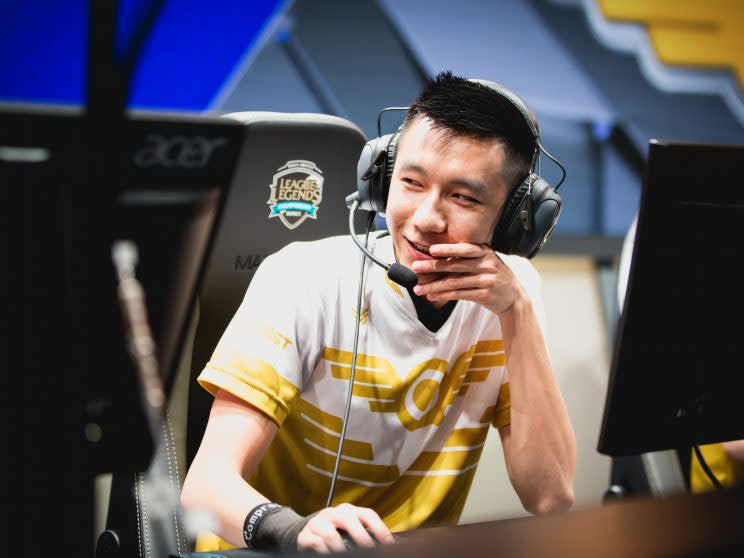
I will concede that there’s a difference between taking historically successful players and building an all-NA team and investing in new talent, but it’s still puzzling that the mere suggestion of an all-NA team continues to be laughed off as a joke and a foolish investment.
Other impacts on local talent
It’s hard to imagine any NA players with competitive aspirations watching Esports Salon wouldn’t feel a sense of discouragement. There has certainly been evidence of NA organizations having an almost indiscriminate appetite for foreign mid lane talent, and this impacting how players strategize. For example, Jordan “Shady” Robinson switched roles away from mid lane to support to make himself a more attractive pickup.
Team Liquid decided the best solution to their flagging roster was to remove their NA-born mid laner and role swap their AD carry import, Piglet to mid, despite his relatively low previous experience in the role. Their initial statement specifically called out Goldenglue as the problem.
“We recognize that Goldenglue is underperforming on the roster,” CEO Steve “Liquid112” Arhancet said. “We understand the damage dealt in teamfights associated with that.”
It didn’t leave the team with good results, they made more drastic changes, and Piglet never seemed to excel in the role. Goldenglue is returning to the roster for the new split.
The barrier to entry for NA-born players to main mid is much higher, as organizations seem to look abroad by default for mid laners. Yasin “Nisqy” Dinçer, one of the less skilled members of the recently qualified Fnatic Academy roster, received an offer from Team EnVyUs as a matter of course. It’s easy to see why when Bjergsen has had continuous success as potentially the best player in the region, and many organizations have simply tried to grab other prospects to replicate TSM’s winning formula.
Thorin brought up the question of whether Jack would have scouted current jungler Juan “Contractz” Arturo Garcia if region-locking didn’t exist. Jack said, “Contractz in particular was a rising star, and he was identified early.” But if region-locking didn’t exist, it’s possible organizations would have spent a long time looking abroad instead of domestically.
What if with jungle, as with mid lane, every organization seemed to import first, look locally later? The default assumption that bringing more Koreans will make everything more competitive permeates the show, and it’s hard not to feel like Contractz wouldn’t have gotten as much attention, regardless of how good he can actually become.
Even when the Salon moved on to discuss raising more young talent with the implementation of franchising (something I agree with as likely to happen and really hope to see), the default assumption that Korean is better didn’t disappear.
“Imagine being able to bring over a promising Korean rookie and take a year and a half to two years to teach them English,” Noah said. “Get them comfortable playing with English-speaking teammates, get them comfortable with North American coaching and infrastructure — you have someone with the mechanical skills and the mindset of a top Korean player, but doesn’t suffer the same type of assimilation damage that a normal Korean player coming here would.”

With few exceptions, the most internationally successful Korean imports aren’t rookies. They succeed in part because they’ve already learned from the Korean system. Players plucked directly from the ladder without prior training in a Korean gaming house haven’t had anywhere near the results of experienced players. Part of that is that the ability to train young players, especially with a language barrier, doesn’t seem as developed in NA as in Korea. I’m not exactly sure what “getting used to NA coaching and infrastructure” means when said coaching and infrastructure seems rarely capable of properly raising domestic rookies.
Then, after time playing in the solo queue environment, a promising Korean rookie becomes more adapted to the culture. According to some, his skill may even decline. He becomes a lot more like an NA-born player over time, and he only has knowledge from “NA infrastructure” to offer.
I don’t think Noah Winston actually believes that Korean players are somehow genetically better at video games. He even said “that would be vaguely racist,” but given circumstances outlined, it comes off that he somehow believes in “mechanical” or “mindset” superiority of Koreans being somewhat ingrained, able to withstand environmental and prolonged change.
MonteCristo appeared to disagree with Noah’s sentiment, based on him following up by asking Noah why he’d bother to important that case. He didn’t see the point. Not every NA owner subscribes to the line of thinking, but it’s surprisingly common.
When I’ve spoken to organizations, I’ve learned that players are sometimes more likely to join if they simply promise “a Korean top” or “a Korean support” without even providing a name, which wouldn’t happen if it were an NA player. Given the hit-or-miss nature of imports when they have to adjust, I don’t know why that continues to persist.
Short and long-term success
Last year, prior to MSI, when Luka “Perkz” Perković, a European mid laner suggested that EU mids could be just as good as Asian mids, he was openly mocked. His stance now is subtly different.
“After playing against the mid laners,” Perkz said, “I actually think now that Asian mid laners are better. It’s not like they’re better individually — before I was judging on mechanics too much, you know, they’re just better by playing with pressure, playing with team, playing the game correctly rather than trying to outplay: something that the new EU mid laners have to evolve on, you know?”
There’s no reason this same conclusion can’t be applied to players everywhere.
Invest the same quality and quantity of training time into an equally talented rookie from North America or Korea, and they should make the same gains as long as improving and succeeding as an esports player is the goal. In the short-term, importing many Korean players and removing region-locking might make North America more competitive, but even Korea is limited by the number of talents it can produce, and this method makes NA reliant on the training system of Korean organizations instead of developing their own. Fixing systemic problems in NA first so they can build their own talent and improve their own environment will make NA much more competitive in the long run.
If franchising is inevitable, and fear of relegation disappears, why do you need to remove region-locking?
Rebuild the inhouse solo queue system. Play it on live for streaming purposes, if necessary. Encourage staff across teams to collaborate more on top teams to discuss techniques if you feel you are behind as a region. Hold staff to a higher level of accountability if it feels like they’re reliant on imported Korean players to learn their job.
Fixing the system and culture may well be harder in NA than anywhere else, given the talent base and other external factors, but there are no shortcuts.
Until the system is examined and worked on instead of assuming the players themselves are the problem, I don’t think removing region locking will necessarily result in the best players going to the best teams. Increase, decrease, or leave the amount of import slots the same, and the system will remain flawed.
Of course, that doesn’t mean NA players get a free pass. They aren’t entitled to anything, especially if owners continue to argue in favor of eliminating region-locking. If they don’t push for more competitive solo queue and start to actually put in the work, they deserve the assumptions put forth in Episode 6 of Esports Salon.
You can follow Kelsey Moser on Twitter @karonmoser.

